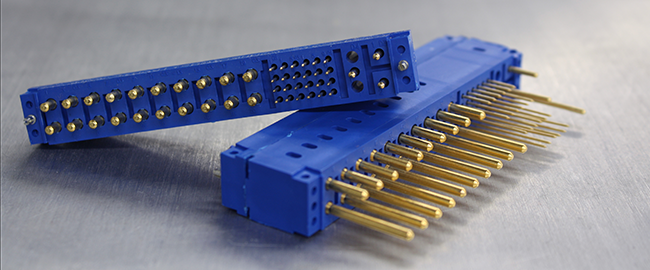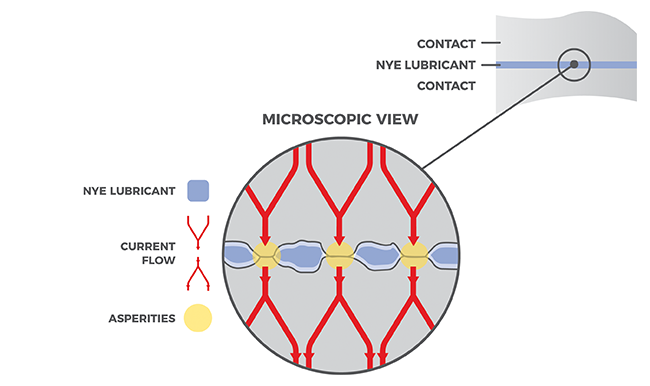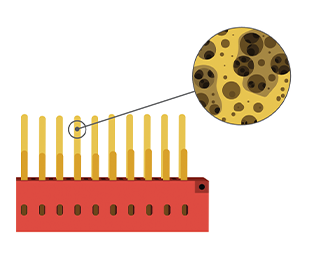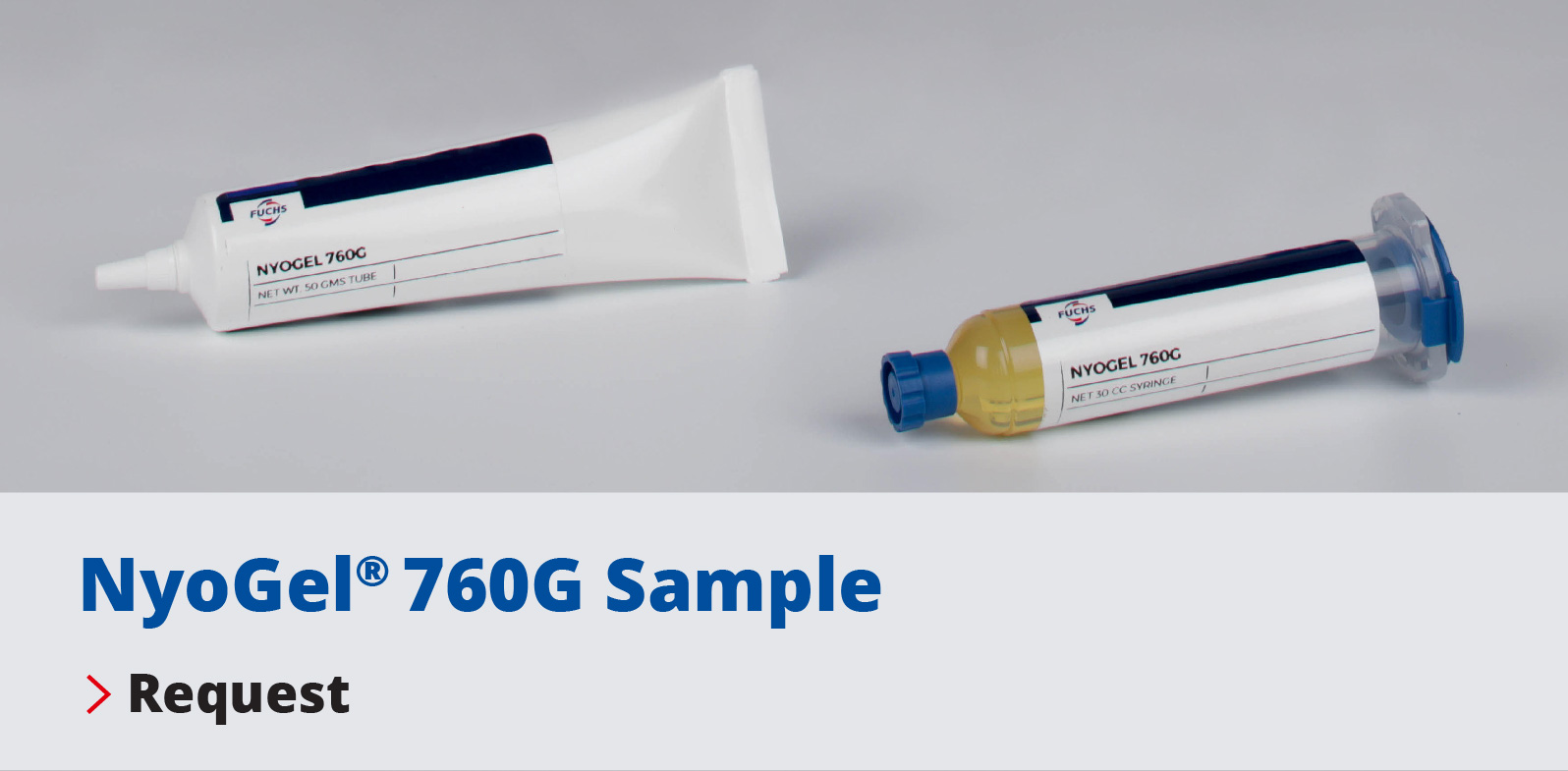Using Connector Lubricants to Improve Reliability and Longevity
Did you know that a single car has upwards of 700 connectors? This number is only expected to increase with the proliferation of electric and autonomous vehicles. But with every additional connector added to a vehicle, a new potential point for failure arises.
When it comes to autonomous and electric vehicles, these failures can result in more than just a quiet radio. If a connector were to become open in an autonomous vehicle, critical safety features such as braking or steering could fail. Something seemingly as small as connector reliability could mean the difference between safe operation, and dangerous, costly recalls.

In addition to more serious issues, faulty connectors usually mean intermittent operation for the consumer, which takes a toll on the perceived quality of the application and the manufacturer’s reputation. For OEMs — and increasingly for their component suppliers — connector troubles mean more customer service calls, field maintenance, and product or part replacements.
The good news, however, is that manufacturers can reduce or eliminate most pesky connector issues simply by applying the right lubricant to contacts. Extensive testing and a long track record in the automotive, aerospace, appliance, computer, and telecommunications industries confirm that lubricants protect electrical contacts from wear and corrosion, a common cause of intermittency; reduce insertion forces, even for connectors with hundreds of pins; and extend the operating life of any stationary separable connector, tin-plated or gold.
A Peak Experience
If lubricants are insulators in bulk, how can they enhance the performance of a connector, where contact resistance must be minimal? The answer is found on the lunar-landscape-like surface of a contact. On a microscopic level, the contact surface is a series of peaks and valleys. Current only flows where the peaks or asperities touch. The actual contact area, therefore, is rather small — in some cases, less than 1% of the entire contact.
When the normal force on the contact is distributed across the tips of the asperities, pressure increases to hundreds of pounds per square inch, easily forcing the lubricant out of the contact zone. In fact, tests show virtually no difference in contact resistance between lubricated and unlubricated connectors, however, there is an unmistakable difference in connector performance and operating life.

A connector lubricant helps minimize environmental and galvanic corrosion. Even properly mated connectors can be exposed to oxygen, moisture, and aggressive gases that can attack non-noble plating. A lubricant passivates the surfaces and keeps contaminates from the contact interface. Tin-plated contacts are prone to fretting corrosion, a phenomenon that occurs when thermal cycling or mechanical vibration causes contact surfaces to rub against each other.
This micro-motion continually abrades the thin tin-oxide layers and exposes fresh tin. Over time, the tin-oxide builds and interferes with current flow. Fretting-related intermittency is a common ‘ghost,’ sometimes temporarily remedied by separating and re-mating the connector. The proper lubricant helps to seal the contact surface and slows this oxidation process and prevents fretting corrosion from occurring.
 Gold-plated contacts have their own “corrosion” problem. Due to the softness of the metal, they are particularly susceptible to galling during mating and un-mating. When thinner flashes of gold are used to reduce costs, the problem is exacerbated. If noble metal plating is worn or porous, oxygen can attack the substrate. Over time, oxides eventually exude through the pores and impair conductivity. A connector lubricant will reduce mating wear and help seal minute fractures in the plating to prevent substrate oxidation.
Gold-plated contacts have their own “corrosion” problem. Due to the softness of the metal, they are particularly susceptible to galling during mating and un-mating. When thinner flashes of gold are used to reduce costs, the problem is exacerbated. If noble metal plating is worn or porous, oxygen can attack the substrate. Over time, oxides eventually exude through the pores and impair conductivity. A connector lubricant will reduce mating wear and help seal minute fractures in the plating to prevent substrate oxidation.
For multi-pin connectors, mating forces increase significantly. With smaller dimensions, tighter footprints, and hundreds of pins, misalignment—a common occurrence with multi-pin connectors—can wear or gall the contacts. A lubricant greatly reduces the coefficient of friction between the mating surfaces, easing insertion while protecting contact surfaces.
Into the Market
Connector greases are widely used in the automotive market. Countless real-life applications demonstrate how a lubricant is used to improve connector performance. A prominent automotive OEM had to learn about costly recalls the hard way. This manufacturer was forced to issue a massive recall after one of their vehicles began to experience short circuiting within their printed circuit boards. When connectors within circuit boards are exposed to water a short circuit will occur immediately. This manufacturer needed a solution that could be applied to components in the field and components on the assembly line.
At this time, dealerships were unable to access the circuit board in recalled vehicles because of a protective casing built around the component. The manufacturer needed to find the appropriate lubricant and dispensing option to reach the hard to access area and solve the short circuit issue. The OEM ended up selecting a Nye dielectric grease packaged in a syringe with a metal tip that enabled dealerships to easily insert the lubricant onto the circuit board. In this case, the lubricant acted as an environmental barrier to keep out moisture, oxidation, and dust that can cause components to short circuit and corrode.
The trucking industry, a subset of the automotive market, also relies on connector greases to protect their components. Trucks are run hard and travel all over the country, so they must be designed for reliability, and longevity in a variety of different climates.

A global leader in the manufacture of commercial trucks was experiencing water washout issues on their battery terminals and starter plugs. To solve this issue, they decided to apply a Nye dielectric grease to the problem areas. This grease provided an environmental seal that keeps out water, road salt, and dirt, to prevent corrosion. Many other trucking OEMs have experienced success using connector grease to protect their chassis and frame components from fretting corrosion.
Many other markets have also utilized dielectric grease with success. Power tools often operate under high loads, high temperatures and are exposed to the environment, which makes connectors within them especially susceptible to corrosion. On battery powered tools, there are electrical connectors where the battery interfaces with the tool.
One prominent power tool manufacturer discovered that after a period of time, the electrical terminals on their battery powered tools were experiencing electrical intermittencies as a result of fretting and corrosion. After applying a connector grease to the terminals, the power tool manufacturer reported far fewer electrical intermittencies which saved the company money in warranty costs.
Specifying An Electrical Connector Lube
The first question to ask is, grease or oil? With very light contact forces and a benign environment, an oil can be used. However, grease — which is a base oil immobilized by a thickener — is often preferred. Unlike oils, grease is less susceptible to migration, so it stays where it is needed.
Several base oil chemistries have been successfully used for connector lubricants. When selecting a base oil, be sure that it can withstand the temperature range in which the connector must operate. At elevated temperatures, oils are subject to evaporation or thermal degradation. At low temperatures, they can become intractable. Also note that even when selecting a grease, it is the temperature range of the oil — not the thickener — that defines the grease’s temperature limits.
| Base Oil | Temperature Range | Material Compatibility Plastic & Elastomers |
|---|---|---|
| Petroleum | -20 to 100°C | Fair |
|
Synthetic Hydrocarbon |
-60 to 125°C | Good |
|
Fluoroether (PFPE) |
-80 to 250°C | Excellent |
|
Polyphenyl Ether (PPE) |
20 to 225°C | Good |
It is important to be cautious about material compatibility. While most lubricants do not affect thermoplastics, esters (diesters and polyolesters) are noted for their incompatibility with polycarbonate, PVC, polystyrene, and ABS resins. Material densities (high vs. low) and additives, such as flame retardants, can also have an effect on compatibility. Elastomeric seals are vulnerable as well. Only fluoroethers are inert enough to be safe with most every seal. While compatibility charts are available from many manufacturers, testing is the only way to guarantee a successful match between a lubricant and a design material.
When water resistance is a concern, a grease is required. Oils are generally not water-soluble, but they are easily displaced by moisture. A grease’s water resistance is determined by the thickener. For example, a lithium soap grease has good fresh water resistance, but poor salt-water resistance. Silica can be hydrophobic or hydrophilic. Clay and PTFE generally perform well in wet environments.
Going Into Production
Applying the right amount in the right location is the key to dispensing connector lubricants during the production cycle. Small connectors that need only a thin layer of lubricant call for a “solvent dispersion,” a grease or an oil (20% or less by weight) mixed into a solvent.
When applied, the solvent evaporates and leaves behind a thin, uniform lubricant coating. Dispersions and oils can be applied by dipping, brushing, or spraying. Depending on the solvents used, there can be environmental and handling concerns, such as flammability or vapor capturing. Dispersions also require agitation and solvent containment to insure a homogeneous coating when applied. Some dispensing equipment manufacturers have been successful in ‘jetting’ greases with high pressure air to provide thin films.
To apply grease, hand-held syringes or brushes can be used for small runs. On production lines, where thousands of contacts or connectors are assembled per hour, special dispensing equipment is usually required. It can precisely dispense minute amounts, in multiple locations simultaneously. Most users apply the lubricant to the more accessible pins, but filling the sockets converts them into lubricant reservoirs. This is especially valuable in connectors where high temperatures can reduce lubricant supply over time.
To facilitate inspection, colored dyes can be added to the lubricant. Usually less than 1% by weight, they are dissolved into the oil and pose no contact issues. Ultraviolet dyes are used in conjunction with optical sensors for fast, automated inspection. When to apply the lubricant is perhaps the final consideration.
Some contact manufacturers or finish platers can provide pre-lubed contacts, but excessive handling of the contacts can remove lubricant. Further, solder baths could degrade the lubricant by exposing it to high temperatures. It can also be difficult to solder over a lubricated area. Whenever feasible, the ideal method is to apply the lubricant just before mating the connector.
Different Connector Lubricants
There are many connector lubricants on the market designed to lower insertion force and protect your contacts from wear and corrosion. Nye Lubricants has a complete line of dielectric greases formulated specifically to address application requirements for arcing, high temperature, environmental protection, fretting wear, and insertion force.
Our universal standard dielectric grease NyoGel® 760G has been used on connectors since the 1980’s and is specified by leading OEMs across many industries. The most recent addition to our line of connector greases is Rheotemp™ 769G which was formulated specifically to improve fretting corrosion performance and reduce insertion force.
| Company | Specification |
|---|---|
| Ford | WSB-M1C239-A |
| GM | 9986087, 12377900, 1645644 |
| FCA | MS-9469, 04661991, 05013781AA |
| Daimler Truck, Freightliner | 48-02439-002, 002V/YNA, CPP760G |
| Trane | D158216P01 |
| Black & Decker | 108694 |
| Honeywell | 0320-1002 |
The addition of a connector lubricant is an inexpensive way to enhance the quality of an electrical connector. Care must be taken to insure proper lubricant selection — and component testing is always recommended. But if a lubricant reduces warranty costs, the up-front effort will pay for itself many times over.
Related Technical Articles & White Papers
CONNECTORS: Using Connector Lubricants to Improve Reliability and Longevity
A whitepaper reviewing the benefits of connector lubrication. These lubricants should be specified in to protect corrosion, fretting wear, and other common causes of electrical failure.


